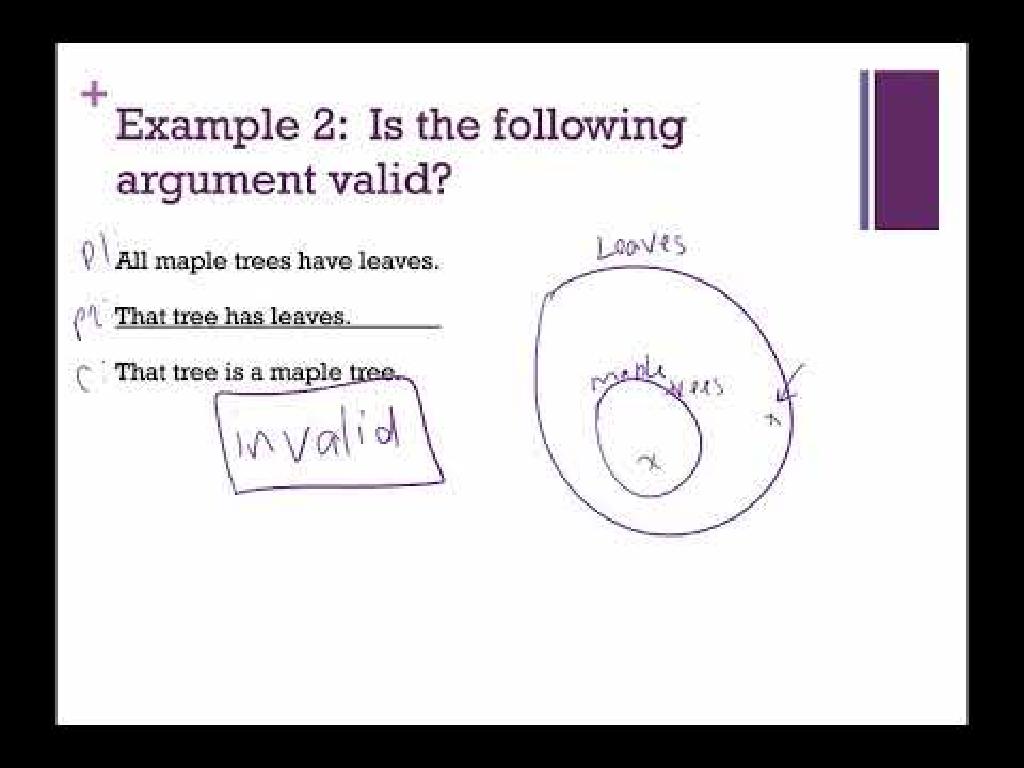Determine The Author'S Point Of View
Subject: Language arts
Grade: Sixth grade
Topic: Point Of View
Please LOG IN to download the presentation. Access is available to registered users only.
View More Content
Understanding Point of View in Literature
– Define Point of View (POV)
– POV is the perspective from which a story is told.
– Types of POV in stories
– First-person, second-person, third-person limited, and third-person omniscient.
– Significance of POV in reading
– It shapes the reader’s perception and creates empathy.
– Analyzing POV in class
– We’ll practice identifying POV in different texts.
|
This slide introduces the concept of Point of View (POV) and its importance in literature. Begin by defining POV as the perspective from which the story is narrated. Discuss the different types of POV, such as first-person, second-person, and third-person (both limited and omniscient), and provide examples for each. Explain how an author’s choice of POV affects the reader’s understanding and emotional connection to the story. Emphasize that recognizing the POV can enhance comprehension and engagement with the text. Plan an activity where students will read passages and determine the POV to reinforce the lesson.
Exploring Types of Point of View
– First Person Point of View
– Narrator is part of the story (I, me, my)
– Second Person Point of View
– Directly addresses the reader (you, your)
– Third Person: Limited
– Narrator knows thoughts/feelings of one character
– Third Person: Omniscient
– Narrator knows everything about all characters
|
This slide introduces students to the concept of point of view in literature, which is the perspective from which a story is told. First person point of view involves the narrator being a character in the story, using ‘I’ or ‘me’ to tell the tale. Second person point of view directly addresses the reader with ‘you’ or ‘your,’ making them feel part of the story. Third person limited point of view means the narrator tells the story from the perspective of one character, sharing their internal thoughts and feelings. Third person omniscient point of view is when the narrator knows everything about all characters, including their thoughts, feelings, and unseen events. Encourage students to identify these points of view in their reading and consider how the choice of narrator affects their understanding of the story.
Identifying the Author’s Point of View
– Clues that reveal point of view
– Look for the author’s tone, choice of words, and personal opinions.
– Words indicating point of view
– Phrases like ‘I believe’ or ‘In my opinion’ show personal point of view.
– Examples from literature
– ‘First person’ uses ‘I’ or ‘we’, while ‘third person’ talks about ‘he’, ‘she’, or ‘they’.
– Understanding different perspectives
– Recognizing whether the story is told from a character’s perspective or an outsider’s view.
|
This slide aims to help students identify an author’s point of view by examining textual clues. Teach students to detect the author’s tone and choice of language, which can provide insight into their perspective. Highlight specific words and phrases that often signal whether the author is presenting facts or personal opinions. Use examples from literature to illustrate different points of view, such as first person or third person narratives. Encourage students to consider how the point of view influences their understanding of the text and to discuss how different perspectives can change the story’s impact.
Understanding First Person Point of View
– ‘I’, ‘We’ pronouns usage
– Indicates the narrator’s direct involvement
– Narrator as a story character
– The narrator shares personal experiences
– Example from literature
– ‘I remember the first time I saw her.’
– Reflect on narrator’s perspective
|
This slide introduces the concept of the first person point of view in literature, where the story is narrated by a character using ‘I’ or ‘We’. It’s important for students to recognize that this point of view allows them to see the events and thoughts through the narrator’s eyes, providing a personal and subjective perspective. Use an excerpt from a novel or short story to illustrate how the first person point of view operates. Encourage students to consider how this perspective affects their connection to the story and their understanding of the narrator’s character. Ask them to think about how the story might change if told from a different point of view.
Understanding Third Person Point of View
– Uses ‘He’, ‘She’, ‘They’
– Narrator outside the story
– The narrator is not a character in the story, but an observer
– Limited vs. Omniscient
– Limited knows thoughts of one, Omniscient knows all characters thoughts
– Examples in literature
– ‘Harry Potter’ series (limited), ‘The Scarlet Letter’ (omniscient)
|
This slide introduces students to the concept of third person point of view in literature. It’s important to explain that in third person, the narrator uses ‘he’, ‘she’, or ‘they’ and is not a participant in the story. Highlight the difference between limited third person, where the narrator only knows the thoughts and feelings of one character, and omniscient third person, where the narrator knows the thoughts and feelings of all characters. Provide examples from well-known literature to help students understand and identify the two types of third person point of view. Encourage students to bring examples from their own reading to discuss and analyze in class.
Comparing Points of View in Stories
– Similarities in different POVs
– First-person and third-person can both show personal feelings.
– Differences in POVs impact
– First-person is limited to one perspective, while third-person can offer multiple viewpoints.
– POV alters story experience
– A story told from a different character’s view can feel like a new story.
– Activity: Identify POVs
|
This slide aims to help students understand and compare the similarities and differences between various points of view (POVs) in literature. Discuss how different POVs can provide unique angles on the same story, and how a change in POV can alter the reader’s experience. For the activity, provide paragraphs with different POVs and ask students to identify them, discussing how each POV shapes their understanding of the text. This will enhance their analytical skills and appreciation for narrative techniques. Possible activities include comparing first-person and third-person narratives, rewriting a paragraph from a different POV, or identifying the POV in a favorite book excerpt.
Exploring Author’s Point of View
– How authors select POV
– Authors choose POV based on the story they want to tell and the connection they want with the reader.
– POV’s impact on comprehension
– A story’s POV can shape how readers perceive characters and events, influencing their understanding.
– Reasons for POV shifts
– Authors may change POV to provide different perspectives, reveal truths, or create suspense.
|
This slide aims to help students understand the concept of the author’s point of view (POV) and its significance in literature. Discuss how authors make deliberate choices about POV to best convey their message and connect with the reader, whether it’s first-person for intimacy, third-person for a broader scope, or second-person for direct engagement. Highlight how POV affects the reader’s interpretation of the story, shaping their insights into the plot and characters. Explore reasons why an author might switch POV, such as to offer a fresh perspective, to build complexity in the narrative, or to guide the reader to an epiphany. Encourage students to consider how different POVs might alter their experience of a familiar story.
Class Activity: Exploring Points of View
– Break into small groups
– Each group gets a story excerpt
– Find the author’s point of view
– Look for clues in the text about the author’s perspective or opinion
– Present your findings to the class
|
This activity is designed to help students understand the concept of the author’s point of view through practical application. Divide the class into small groups to encourage collaboration. Provide each group with a different story excerpt, ensuring a variety of genres and writing styles. Instruct students to read their excerpts and discuss within their groups to determine the author’s point of view. Is it first person, with ‘I’ statements? Second person, addressing the reader as ‘you’? Or third person, talking about ‘he’, ‘she’, or ‘they’? Encourage them to look for narrative style, tone, and choice of language as clues. Each group will then present their findings to the class, explaining how they came to their conclusion. This will not only help them understand different perspectives but also enhance their public speaking and critical thinking skills.
Reflecting on Point of View
– Recap: Why POV matters
– POV’s role in reading comprehension
– Identifying POV helps grasp the narrative’s perspective and bias.
– Discuss: Today’s POV activity
– Share thoughts on the POV exercises and what was learned.
– Reflect: How POV influences understanding
– Consider how different POVs can change the story’s meaning.
|
This slide aims to consolidate the students’ understanding of the author’s point of view (POV) and its significance in literature. Begin with a brief recap of the key reasons why POV is crucial in storytelling. Emphasize how recognizing the POV can enhance comprehension and engagement with the text. Facilitate a class discussion reflecting on the POV activities completed, encouraging students to articulate their insights and how the exercises helped them. Lastly, prompt students to reflect on how different POVs can alter their interpretation of a story, fostering a deeper appreciation for the author’s craft. This reflection will help students apply these concepts to future reading assignments.






